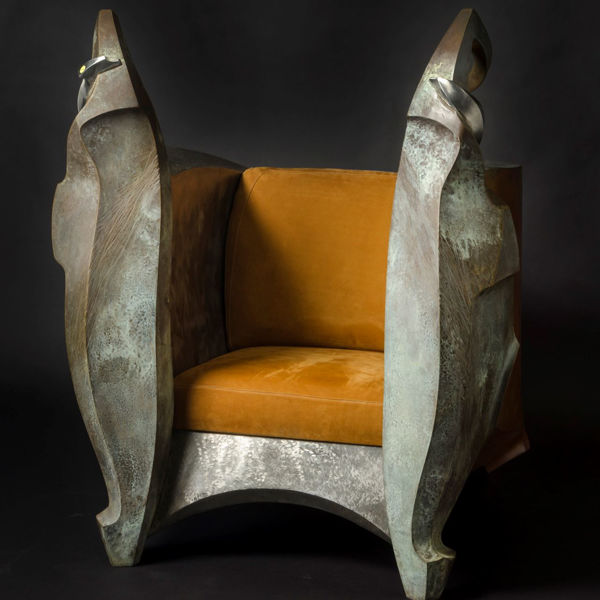Ceramics
Title: Kangaroo
Massive Sculpture from The Cast series, "Kangaroo," New York, 2003; Hand-built earthenware, applied wool, acrylic yarn; Signed Lucero; 38" x 24 1/2" x 18" Excellent condition
Title: KERMES
Natural and alien collide in Kwong’s biomorphic sculptural composition “KERMES”, the artist uncovering a world of creatures that seem to defy earthly bounds but which are heavily inspired by and indebted to the remarkable forms of microbiology. “KERMES” has a curious rearing movement upwards, the form finding remarkably and affectively personable countenance with the most minimal of details, and single skin forming an unbroken surface on which violet pink glazes sit. The creature’s artifice of personality, strange unreality, and overall elegance in form play upon the viewers inquisitiveness — reminiscent the vivid colours used as a warning for toxicity or danger in wildlif Stoneware, glaze, Hand Built.
Title: La Neta
Peruvian Kukuli Velarde makes work indebted to folk tradition and traditional ornamentation, exploring the new politics of identity, estrangements of context and acts of “forgetfulness” that occur as art is displaced from its origin. ‘LA Neta’ is cut from a series of works exploring memory, fear, desire and ideology through figurative icons that, in tandem, present a larger picture of the artists identity and belief in a shared system of traits. The sculpture seems dreamlike and more hopeful than many within the ‘Isichapuitu’ set, the ceramic finished in a deep blue glaze and gold enamel that reflects an attractive lustre. Flames or leaves erupt along the surface in a suggestion of sexual vitality or growth, whilst lucid verse traces ribbon-like from the figures mouth and down across its circumference — and speaks of time, origins and discovery. 'ISICHAPUITU series, 1998-2001 glazed earthenware 24 in. (61 cm.) high (5) Sheboygan, Kohler Arts Center, Kukuli Velarde: Cantaros de Vida (The Isichapuitu Series), 2002.
Title: Large Bisque Bank
The “Mad Potter of Biloxi”, George Ohr [1857-1918] was an American ceramicist celebrated from his freely expressive and experimental clay forms — prefiguring the modern Abstract-Expressionist movement with his strange and loose understandings of clay. ‘Large Bisque Bank’ is clearly designed as a vessel for the storing of coins and would have been sold from within the potter’s workshop, the unusual figure typical of the artist’s easy and quick witted control of clay through modest gesture.





































